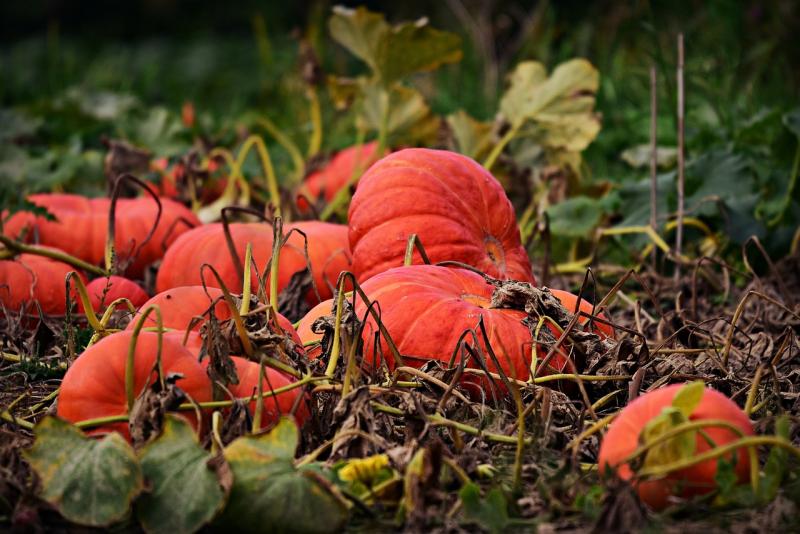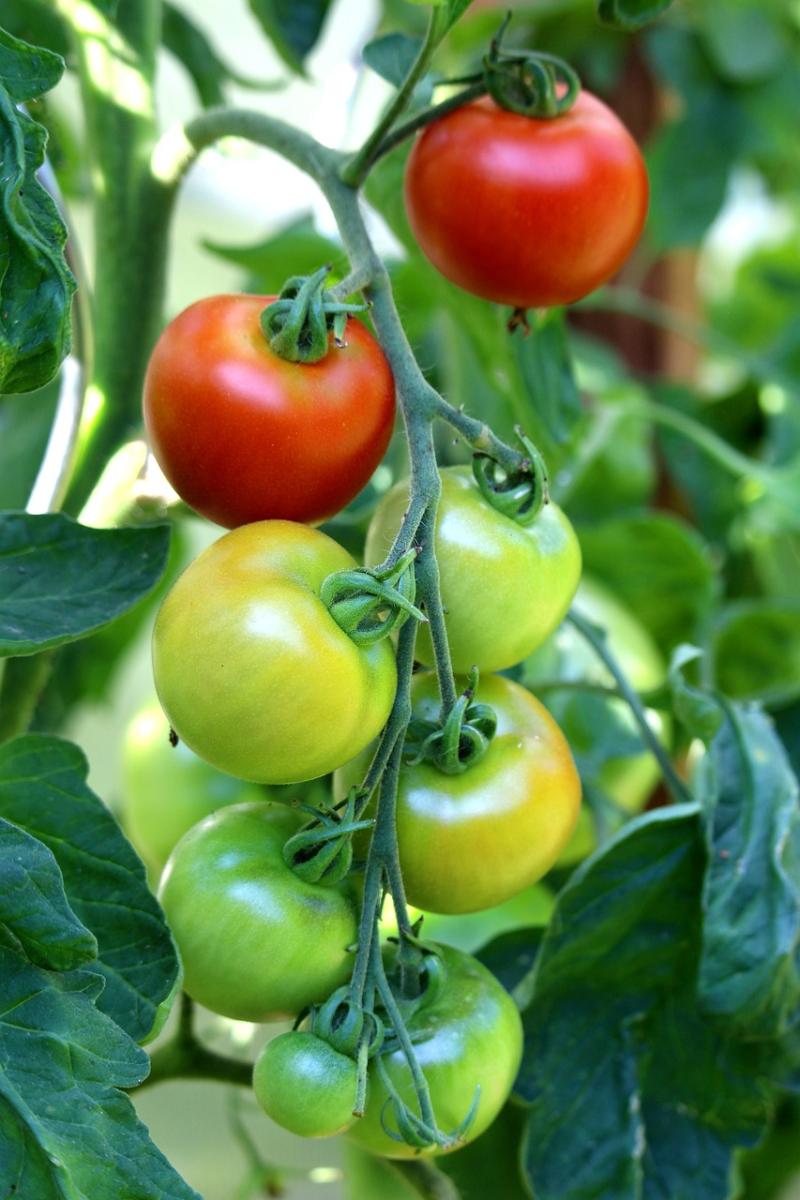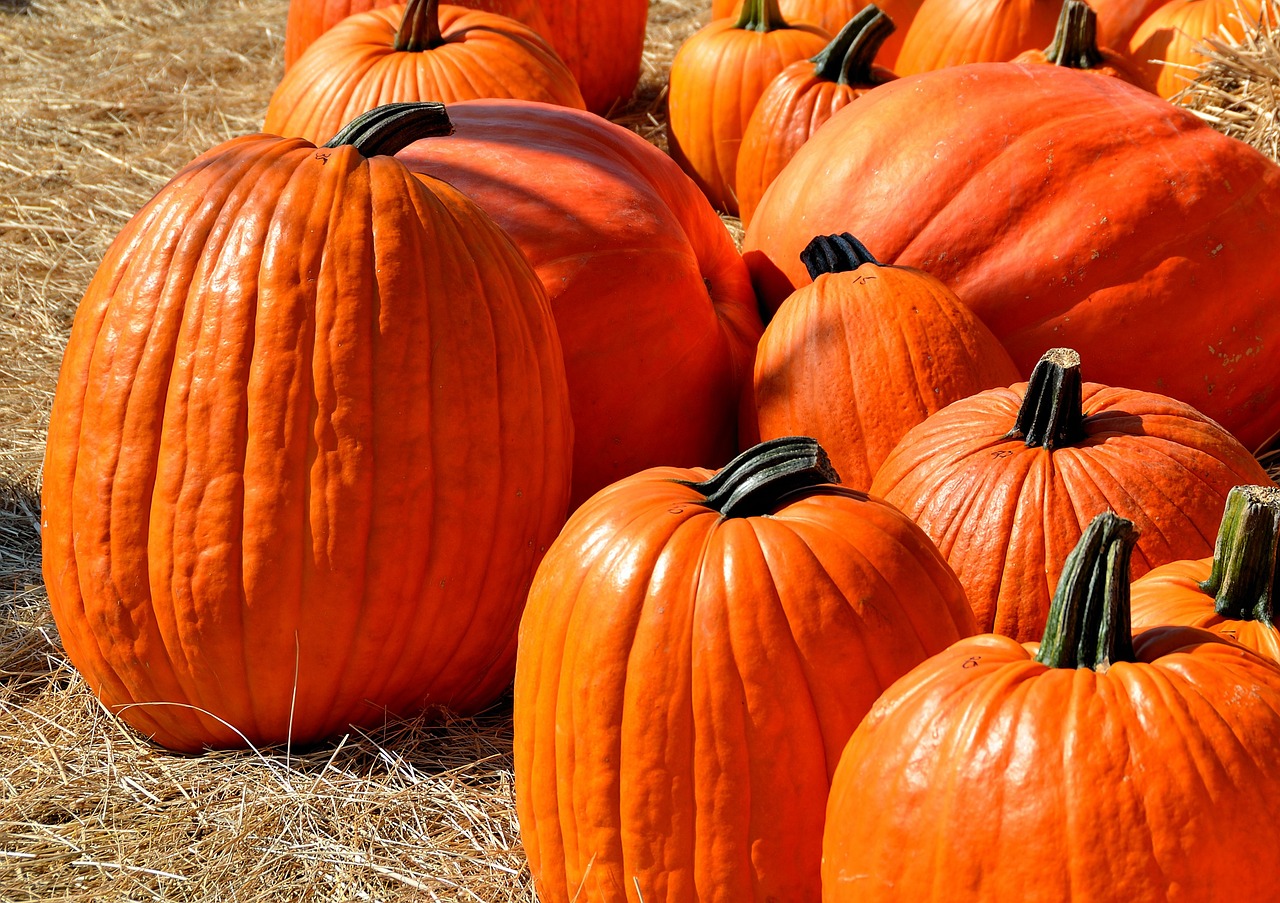
Tomatoes and pumpkins are two vegetables we get calls on in the fall. We haven't reached the growing season's end yet, but it's only a few weeks away. If there are still tomatoes or pumpkins in the garden to harvest, follow these recommendations to ensure a successful end to your harvest season.
 Late Season Tomato HarvestHarvest mature, green tomatoes when frost is imminent. The fruit should be solid, firm, and free of defects. Mature, green tomatoes are full-sized and have a greenish white skin color. Remove the stems, then clean and dry the fruit.
Late Season Tomato HarvestHarvest mature, green tomatoes when frost is imminent. The fruit should be solid, firm, and free of defects. Mature, green tomatoes are full-sized and have a greenish white skin color. Remove the stems, then clean and dry the fruit.
Individually wrap each fruit in a piece of newspaper and place in single layers in boxes or shelves. Store the tomatoes in a dark, cool (55-60 F degrees) location, such as a basement or cellar.
Inspect the tomatoes periodically during storage. Discard any soft or decaying fruit. When the tomatoes begin to color, remove the newspaper and place them at room temperature.
An alternate ripening method is to leave the green tomatoes on the vine and pull the entire plant and hang it upside down in a cool, dark location. (Obviously, this method can be a bit messy.) Harvest the tomatoes from the vine as they ripen.
Red ripe tomatoes produce ethylene gas, a natural gas which hastens the ripening of other nearby tomatoes. You can speed up the ripening of green tomatoes by storing them near a red tomato. To slow the ripening process, remove all red-ripe fruits from the storage area.
Bringing tomatoes into a warmer area, 65-70 F degrees, will also speed up the ripening process. Mature green tomatoes will ripen at this temperature in about two weeks.
 Pumpkin Harvest
Pumpkin Harvest
Mature pumpkins should be uniformly colored across the entire fruit- orange, white, gray or blue- depending on the variety grown. Look for the mature coloration indicated on the seed packet as a guide to ripeness. Mature pumpkins have hard, shiny shells that can't be easily punctured by a fingernail.
Pumpkins will rot if harvested too young or if allowed to stay in the field once they are mature and exposed to freezing temperatures. But they can remain in the garden through a light, vine-killing frost. A light frost will not damage the pumpkins themselves. However, all mature pumpkins should be harvested before temperatures drop into the mid to low 20's. Green, immature pumpkins will not turn orange after a killing frost.
When harvesting pumpkins, handle them carefully to avoid cuts and bruises. Cut the pumpkins off the vine with a sharp knife or pair of lopping shears. Leave several inches of stem attached to each fruit. A pumpkin with a 3-5 inch stem or handle is more attractive. Also, pumpkins with stems are less likely to rot in storage. Do not carry pumpkins by their stems. The stems may not be able to support the weight of the pumpkins and may break off.
Cure Pumpkins to Lengthen Their Storage Life
After harvesting the pumpkins, cure them at a temperature of 80 to 85 degrees F and 80 percent relative humidity for 10 days. Simply set the pumpkins in a warm humid location, out of direct sun, for this length of time. Curing helps to harden their skins and heal any cuts and scratches.
After curing, store the pumpkins in a cool, dry place. Storage temperatures should be 50 to 55 degrees F. When storing pumpkins, place them in a single layer where they don't touch one another. Good air circulation helps to prevent moisture from forming on the surfaces of the fruit and retards the growth of decay fungi and bacteria. Placing the pumpkins in piles generates unwanted heat which may result in the rotting of some fruit. Promptly remove and discard any pumpkins that show signs of decay.
Pumpkins that are properly harvested, cured, and stored should be in excellent condition for Halloween painting or carving in October or cooking during the holidays.
For tips on preserving your garden produce, visit UNL Food Preservation.
Images from Pixabay.com
- As tomatoes ripen, the skins change color from a deep apple green, to white-green, and finally will begin to develop the mature ripe color.
- Leave several inches of stem attached to each pumpkin at harvest.